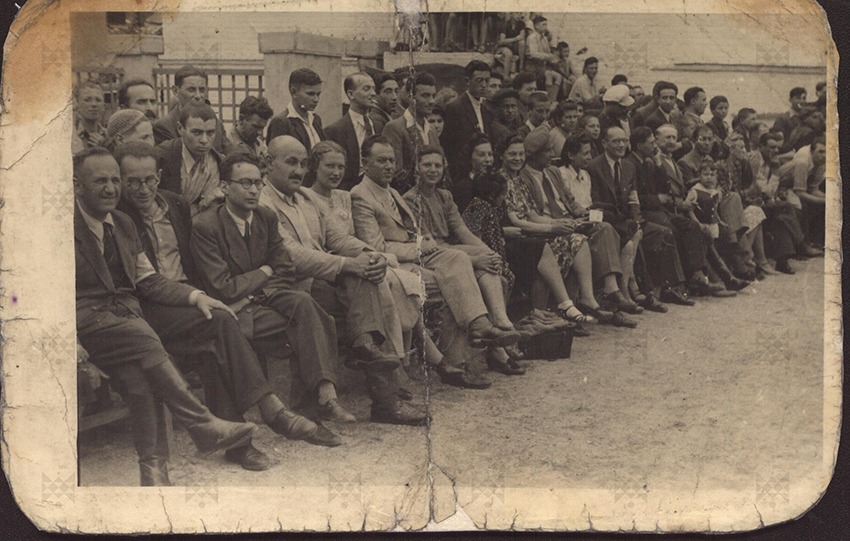EXHIBIT OF THE MONTH |
← |
Published: 2021-01-05
This photograph captures a moment from the opening of the Vilna Ghetto sports ground. Front row (from left): Ferdinand Beigel, a policeman of the Vilna Ghetto (first from left), Salek Desler, deputy head of the ghetto police (fourth from left), Jacob Gens, head of the Vilna Ghetto and the ghetto police (sixth from left), Gens' daughter Ada (seventh from left), and Gens' wife Elvyra Budreikatė (tenth from left).
On 1 July 1942, Herman Kruk made a record in his diary saying that he was surprised to hear children sing. This was the singing of the children who built and installed the sports ground in the ghetto. According to Kruk, ‘In the ghetto it sounded like an echo of the past, a part of history of the youth who lived and died for a better and more beautiful tomorrow.’
Officially, the sports ground in the courtyard of the Vilna Ghetto Library (now Žemaitijos St. 4) was opened on 10 July 1942. At the opening speeches were made by engineer Grigorij Guchman, head of the Vilna Ghetto Jakov Gens, head of the Sports Department – Shabbetai Milkanowicki, and a girl representing the children, who thanked for the installation of the sports ground and handed flowers to the ghetto authorities.
An intellectual and one of the chroniclers of life in the Vilna Ghetto Zelig Kalmanovich, made the following record in his diary when watching young people on the sports ground: ‘In front of me, in the stadium, built by the ghetto for the young people who practice sports, there is Jewish youth, abandoned children [...] They are the meaning of our survival.’
The opening of the sports ground played an important role in the life of the young people imprisoned in the ghetto, connecting the past and the future. Sports in the Vilna Ghetto, like theatre and the creative work of writers and painters, was a form of spiritual resistance.
| ↑ | ← |

